522. The letter
α,
which Halley had assigned for the principal star in his
Robur Carolinum,
.jpg)
was later changed (by
others) into β Carinae, also
known as Miaplacidus. Allen:
"Miaplacidus is thus
written in Burritt's Geography of 1856, but is
Maiaplacidus in his Atlas
of 1855, the meaning and
derivation of which I cannot
learn, unless it be in part, as
Higgins asserts in his brief
work on starnames, from Miyah,
the plural of the Arabic Mā,
Water ..."
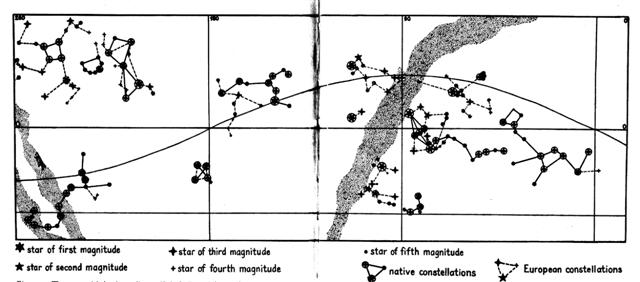
Leo
can be seen to urinate at Zosma and
Coxa, we can read from the star
map above. And when the royal
double-canoe was sighted
outside the southwest corner of Easter Island Nonoma (Jupiter) was
indeed out
urinating in the night:
... The canoes of
Ava Rei Pua
and of Hotu were seen
near the (off-shore) islets. On
the fifteenth day of the month
of October (tangaroa uri) the canoe of
Hotu
and the canoe of Ava Rei Pua
landed. On the fifteenth day of
the month of October (tangaroa
uri), Nonoma left
the house during the night to
urinate outside. At this point
Ira called out to Nonoma, 'Look at the canoe!'
Nonoma ran, he quickly
went to Te Hikinga Heru
(a ravine in the side of the
crater Rano Kau) and
looked around. There he saw the
double canoe way out near the
(offshore) islets, and the two
(hulls of the canoe) were lashed
together. He ran and returned to
the front of the house. He
arrived and called into the
house: 'Hey you! This canoe has
arrived during the night without
our noticing it!' Ira
asked Nonoma, 'Where is
the canoe, which you say is
lying out there (in the water)?'
Nonoma's voice came back:
'It is out there (in the water)
close to the (offshore) islets!
There it lies, and the two
(hulls) are lashed together.'
The four of them (corrected for
'the six of them') went out and
picked up leaves (on branches)
to give signals. They picked
them up, went and arrived at Te Hikinga
and saw the
canoe. Raparenga got up,
picked up the leaves, took them
in his hands, and waved, waved,
waved, waved ... (E:75)
|
Sons of Hau Maka |
Sons of Hua Tava |
|
Ira |
Sun |
Kuukuu |
Mars |
|
Raparenga |
Moon |
Ringiringi |
Mercury |
|
|
Nonoma |
Jupiter |
|
Uure |
Venus |
|
Makoi |
Saturn |
|
Mercury |
Jupiter |
Venus |
Saturn |
Sun |
Moon |
Mars |
|
1 |
2 |
3 |
4 |
5 |
6 |
7 |
|
8 |
9 |
10 |
11 |
12 |
13 |
14 |
|
15 |
16 |
17 |
18 |
19 |
20 |
21 |
|
22 |
23 |
24 |
25 |
26 |
27 |
28 |
|
Wednesday |
Thursday |
Friday |
Saturday |
Sunday |
Monday |
Tuesday |
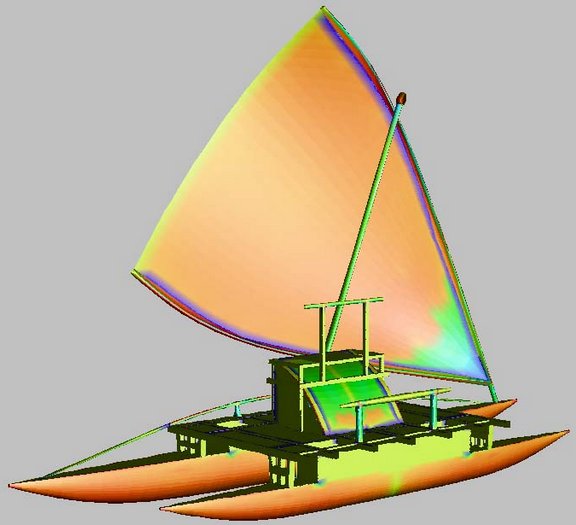
October 15 is day number 288
in our calendar (if not a leap
year) which can be explained as 9 weeks
before day 351 (= 13 * 27).
| Jan |
31 |
31 |
| Febr |
28 |
59 |
| March |
31 |
90 = 101 - 11 |
| April |
30 |
120 |
| May |
31 |
151 |
| June |
30 |
181 = 80 + 101 |
| July |
31 |
212 |
| Aug |
31 |
243 |
| Sept |
30 |
273 = 3 * 91 |
| Oct |
31 |
304 |
| Nov |
30 |
334 |
| Dec |
31 |
365 = 5 * 73 |
Water
precedes birth. The
Gregorian calendar, for
instance, 'was born' in day 288
(= 12 * 24):
... The Julian calendar day
Thursday [the day of Jupiter], 4 October 1582 was
followed by the first day of the
Gregorian calendar, Friday [the
day of Venus], 15
October 1582 (the cycle of
weekdays was not affected)
...
And from
Rogo in
Gb6-26 to the end of
side b (prior to the 'birth'
of side a) there are 63
(= 9 * 7 = 46 + 365 -
348) glyphs:
... Allen has
documented the dates for the culminations of
important stars not as they were observed at 24h (=
0h) but at 21h. Probably this was because the
precession had moved the night sky ahead around 3h (= 3h /
24h * 365.25 = ca 46 of my right ascension days)
compared to an ancient arrangement ...
|
MAY 2 |
3 (123 = 107 +
16 = 3 * 41) |
4 |
5 |
 |
 |
 |
 |
|
Gb6-25 (229 +
178) |
Gb6-26 (408 =
471 - 63) |
Gb6-27 (180) |
Gb6-28 (136 +
45) |
|
7h (106.5) no star listed
(106) |
WEZEN (Weight) =
δ Canis Majoris
(107.1),
τ
Gemini (107.7),
δ
Monocerotis
(107.9) |
no star listed
(108) |
λ Gemini (109.4), WASAT (Middle) = δ Gemini
(109.8)
*68.0 = *109.4 -
*41.4 |
|
July 5 (186) |
6 (*107) |
7 |
8 |
|
°July 1 |
2 (183) |
3 (*104) |
4 |
|
'June 8 |
9 (*80) |
10
(161 = 7 * 23) |
11 |
|
.. The month,
which takes its
name from
Juppiter the
oak-god, begins
on June 10th and
ends of July
7th. Midway
comes St. John's
Day, June 24th,
the day on which
the oak-king was
sacrificially
burned alive.
The Celtic year
was divided into
two halves with
the second half
beginning in
July, apparently
after a
seven-day wake,
or funeral
feast, in the
oak-king's
honour
... |
|
"May 25 (144) |
26 |
27 |
28 (*68) |
|
DAY 106 |
107 |
108 |
109 |
|
CLOSE TO THE
FULL MOON: |
|
OCT 31 (= 288 +
16) |
NOV 1 |
2 (306) |
3 (*227
→ 22 / 7 → π) |
|
Al Na'ām-18 (Ostriches) / Uttara Ashadha-21 (Elephant tusk, small
bed)
NUNKI = σ Sagittarii
(288.4), ζ Cor.
Austr. (288.5),
MANUBRIUM = ο Sagittarii (288.8), ζ Aquilae (288.9)
*247.0 = *288.4
- *41.4 |
19h (289.2)
λ
Aquilae (Ant.)
(289.1),
γ
Cor. Austr
(289.3),
τ
Sagittarii
(289.4),
ι
Lyrae (289.5),
δ
Cor.
Austr. (289.8)
*248.0 = *289.4
- *41.4 |
Al Baldah-19 (City) AL BALDAH = π
Sagittarii,
ALPHEKKA (Dish)
MERIDIANA = α
Cor. Austr.
(290.1), β Cor.
Austr. (290.2) |
ALADFAR = η
Lyrae
(291.1),
NODUS II = δ
Draconis
(291.5), ψ
Sagittarii
(291.6), τ
Draconis
(291.7), θ Lyrae
(291.8) |
|
... This [σ
Sagittarii] has
been identified
with Nunki
of the
Euphratean Tablet of the
Thirty Stars,
the Star of the
Proclamation of
the Sea, this Sea being
the quarter
occupied by
Aquarius,
Capricornus,
Delphinus,
Pisces, and
Pisces
Australis. It is
the same space
in the sky that
Aratos
designated as Water ... |
|
Jan 3 (368) |
4 |
5 (*290) |
6 |
|
°Dec 30 (364
= 84 + 280) |
31 (*285) |
°Jan 1 |
2 |
|
'Dec 7 |
8 |
9 (*263) |
10 (344) |
|
"Nov 23 |
24 |
25 (*249) |
26 (330) |
|
DAY 288 |
289 |
290 |
291 |
The
bright (1.75) star
high up in Robur
Carolinum is
γ in the Sail (Latin:
Vela) of Argo Navis:
... Gamma Velorum
(γ
Vel,
γ
Velorum) is a star
system in the
constellation Vela. At
magnitude +1.7, it is
one of the brightest
stars in the night sky.
It has the traditional
names Suhail and
Suhail al Muhlif,
which confusingly also
apply to Lambda Velorum.
It also has a more
modern popular name
Regor, which was
invented as a practical
joke by the Apollo 1
astronaut Gus Grissom
for his fellow astronaut
Roger Chaffee. Due to
the exotic nature of its
spectrum (bright
emission lines in lieu
of dark absorption
lines) it is also dubbed
the 'Spectral Gem of
Southern Skies'
...
 |
 |
 |
 |
 |
 |
 |
|
Ga2-24 |
Ga2-25 (55) |
Ga2-26 (136 - 80) |
Ga2-27→ π |
Ga2-28
|
Ga2-29 |
Ga3-1 (60) |
|
CLOSE TO THE SUN: |
|
July 17
φ Gemini (118.4)
*77.0 = *118.4 - *41.4 |
18
DRUS (Hard) = χ Carinae
(119.9) |
19 (200)
ω Cancri (120.2) |
20 (80 + 11 * 11)
8h (121.7)
χ Gemini (121.0),
NAOS = ζ Puppis (121.3) |
21
ρ Puppis
(122.0),
HEAP OF FUEL = μ Cancri
(122.1), ζ Monocerotis (122.3), ψ Cancri (122.6),
REGOR (Roger backwards) = γ Velorum (122.7) |
22 / 7
TEGMINE = ζ Cancri
(123.3) |
23 (204)
AL TARF (The End) = β Cancri (124.3)
RAS ALGETHI (α Herculis)
|
|
'June 20 |
Solstice |
22 (173 = 200 - 27) |
23 |
24 |
25 |
26 (177 = 6 * 29˝) |
|
CLOSE TO THE FULL MOON: |
|
Jan 16 |
17 |
18 |
19 (384) |
20 |
21 |
22 |
|
ι Sagittarii (301.2),
TEREBELLUM = ω Sagittarii, ξ Aquilae (301.3),
ALSHAIN (Falcon) = β Aquilae (301.6), φ Aquilae (301.8) |
ε Pavonis, θ Sagittarii (302.3), γ Sagittae (302.5), μ Pavonis (302.7) |
τ Aquilae (303.8) |
20h (304.4)
η Sagittae (304.2), δ Pavonis (304.4)
*263.0 = *304.4 - *41.4 |
SHANG WEI (Higher Guard) =
κ Cephei (305.2),
θ Sagittae (305.4),
TSEEN FOO (Heavenly Raft) =
θ Aquilae (Ant.)
(305.6),
ξ Capricorni (305.8)
*264.0 = *305.4 - *41.4 |
TSO KE (Left Flag) =
ρ Aquilae (306.3 |
GREDI (Goat) =
α Capricorni
(307.2),
σ Capricorni (307.5),
ALSHAT (The Sheep) =
ν Capricorni (307.9) |
|
'Dec
20 (354) |
Solstice |
22 |
23 |
24 |
25 |
26 (360) |
The
line from Canopus (α)
to
Miaplacidus (β)
continues on to Simiram
(ω), which rose
simultaneously with
both the Northern
Gazelle
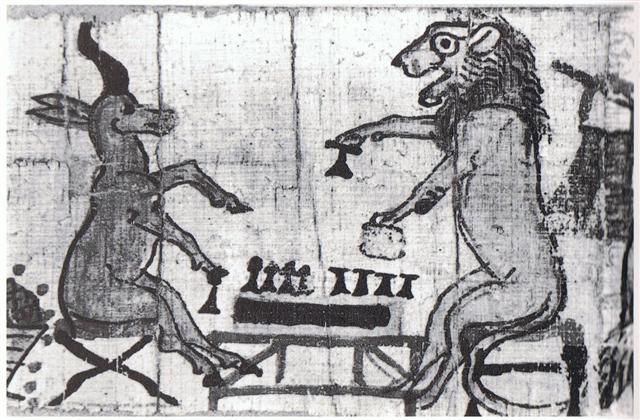
and with
Adhafera
(*154),
which was
59 (= 2 *
29˝) right
ascension
days after
Canopus
(*95):
...
Epimenides
the Cretan -
who said
that all the
Cretans were
liers -
lived to be
157 years
old, or to
be 299 or
154:
 |
 |
 |
154 |
| Ca9-8 (8 * 29˝) |
Ca9-9 |
Ca9-10 |
| ku tupu te poporo |
kotia |
kua rere |
|
Poporo. A plant (Solanum forsteri); poporo haha, a sort of golden thistle. Vanaga. A berry whose juice is mixed with ashes of ti leaves in tattoing. Ta.: oporo, a capsicum plant. The Tahiti oporo is not a degradation of poporo but is the original poro stem augmented by that o which in Tahiti is word-formative in a sense too elusive to find expression in European ideas. Mgv.: poporo, the July season when the leaves fall. Mq.: pororo, dry, arid. Sa.: palolo-mua, July. Ma.: paroro, cloudy weather. Poporohiva, milk thistle. Churchill. |
| 314 / 2 = 584 / 2 - 270 / 2 = 157 |
|
... 471 (= 229 + 242) = 1˝ * 314 = 3 * 157 = 300 + 3 * 57, which should remind us of how Epimenides slept for 57 years in a cave (471 + 57 = 2 * 264 = 11 * 48) and how he then lived on to be 157 years (or 299 or 154) ... |
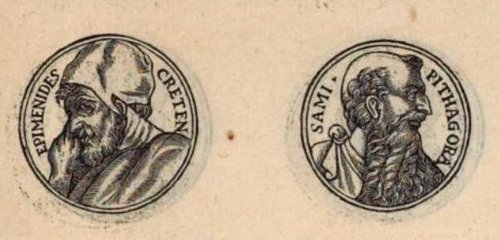
|
tu
te
rau
hei |
ku
hakahonui
raua |
kiore |
hokohuki |
te
rau
hei |
te
moko
e te
hokohuki |
 |
 |
 |
 |
 |
 |
 |
|
Cb6-12 |
Cb6-13
(520) |
Cb6-14
(155
+
366) |
Cb6-15
(130) |
Cb6-16
(392
+
131) |
Cb6-17 |
Cb6-18 |
|
λ
Hydrae
(153.2) |
ADHAFERA
= ζ
Leonis,
TANIA
BOREALIS
(Northern
Gazelle)
= λ
Ursae
Majoris,
SIMIRAM
= ω
Carinae
(154.7) |
ALGIEBA
(The
Mane)
=
γ
Leonis,
q
Carinae
(155.5) |
TANIA
AUSTRALIS
(Southern
Gazelle)
=
μ
Ursae
Majoris
(156.0),
GHOST
OF
JUPITER
=
NGC3242
Hydrae
(156.8) |
Extended
Net-26b
(Ox)
μ
Hydrae
(157.1) |
Maru-sha-arkat-Sharru-15
(4th
Son
behind
the
King)
SHIR
(Possessing
Luminous
Rays)
= ρ
Leonis
(158.9) |
p
Carinae
(159.3) |
|
...
From
a
point
a
little
to
the
west
of
ζ
[Adhafera,
ζ
Leonis]
and
not
much
farther
from
γ -
when
first
observed
the
radiant
point
was
in
Cancer
-
issue
the
Leonids,
the
meteor
stream
of
November
9th
to
17th,
its
maximum
now
occurring
on
the
13th
to
14th,
which
about
every
thirty-three
years
has
furnished
such
wonderful
displays,
the
last
in
1866
and
the
next
due
in
1899.
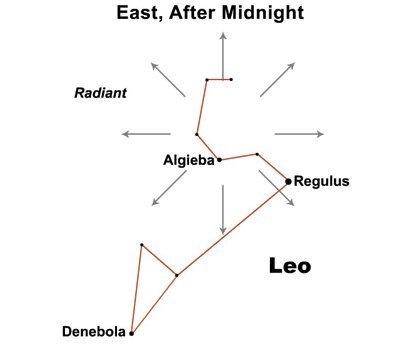
Their
first
noticed
appearance
may
have
been
in
the
year
137,
since
which
date
the
stream
has
completed
fifty-two
revolutions.
According
to
Theophanes
of
Byzantium,
the
shower
was
seen
from
there
in
November,
472;
but
the
late
Professor
Newton,
our
deservedly
great
authority
on
the
whole
subject
of
meteors,
commenced
his
list
of
the
Leonids
with
their
appearance
on
the
13th
of
October,
902,
the
Arabian
Year
of
the
Stars,
during
the
night
of
the
death
of
King
Ibrahim
ben
Ahmad,
and
added:
It
will
be
seen
that
all
these
showers
are
at
intervals
of a
third
of a
century,
that
they
are
at a
fixed
day
of
the
year,
and
that
the
day
has
moved
steadily
and
uniformly
along
the
calendar,
at
the
rate
of
about
a
month
in a
thousand
years.
(Allen)
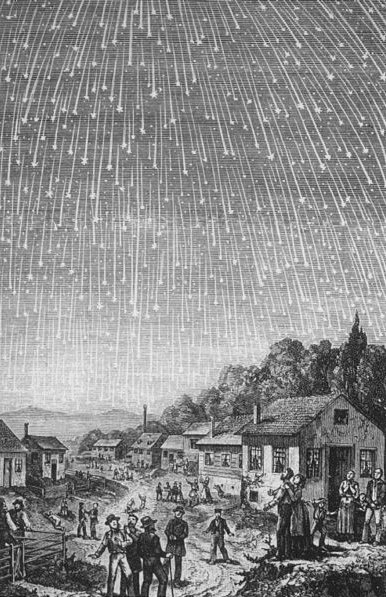 |
The outline
of Carina
ends with
θ (Vathorz
Posterior),
where the
trunk
becomes
hidden by
foliage.
| Egyptian nfr |
 |
Phoenician teth |
 |
Greek theta |
Θ (θ) |
|
... The form of the letter θ suggests a midline ('waist'), although the origin of θ is the Phoenician tēth which means 'wheel'. This in turn could have originated from a glyph named 'good' which in Egypt was nfr ...
... θ is the last star in the Ara constellation, and the ancient meaning of this letter was described as a wheel by the Phoenicians but for the Egyptian it meant 'good'. When the wheel of time has come full cycle around and the upside down fire-altar is in the past the times ahead should be good (or lucky Sa'ad) ...
According to Wilkinson nefer originally depicted the throat and heart of a sheep:

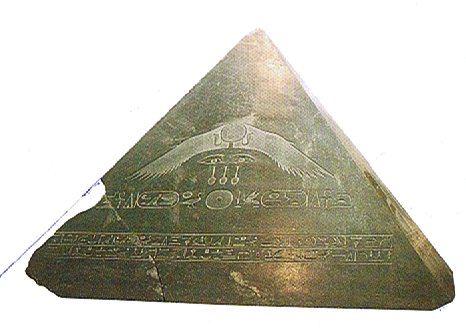
|
| kua tupu te mea ke |
|
Ke. 1. Other; different; different being; hare ké, a different house; e-ké-ro-á... e-ké-ro-á... there are some who... and others who...; me'e ké, something distinct, different: te puaka ina oona kuhane; me'e ké te tagata, he hakari oona, he kuhane, an animal has no soul; man is different, he has a body, and a soul; matu'a ké, the other relatives. 2. Ké te kairua, person who turns up for meals at other people's homes. 3. Used in exclamations: hahau ké! what a cool breeze!; hana ké! how hot! takeo ké! how cold! Vanaga. Other, distinct, different, diverse, otherwise; koona ke, elsewhere; tagata ke, some one else; mea ke, contrary, distinct, otherwise; hakake, feint, stratagem, to feign; hagake, to act contrary. T Pau.: ke, different. Mgv.: ke, another, other, else, different, of partial comparative value. Mq.: ke, é, to be different, changed, no longer the same. Ta.: e, different, strange, other. Churchill.
E, adv. and ppr. Haw., from, away, off, by, through, means of; also, adverbially, something other, something strange, new; adj. contrary, opposed, adverse, other, foreign. Sam.: e, ppr. by, of; ese, other different, strange. Ta., e, ppr. by, through, from; adv. away, off; adj. different, strange, distant; ee, strange. N. Zeal., ke, strange, different. Malg., eze, of, by. Greek, έκ, έξ, from out of, from, by, of; έκει, in that place, opp. to ένθαδε, in some other place than that of the speaker, thither; έκας, afar off. Lat., e, ex, out of, from. Liddell and Scott (Gr.-Engl. Dict., s. v.) say: 'The root of έτ-ερος is said to be the same as Sanskr. ant-aras, Goth. auth-ar, Germ. and-er, Lat. alt-er, aut, French aut-rui, our eith-er, oth-er, itara = alius, also in Sanskrit.' Whatever the root of ant-aras, auth-ar, alter, it seems to me that έκας shows nearer kindred to the Polynesian e, ke, ee, ese, eze, than to forms so developed as ant-ar, ant-ara, &c. (Fornander) |
 |
 |
 |
| Cb6-19 (526) |
Cb6-20 (135 = 500 - 365) |
Cb6-21 (2 * 264 = 22 * 24) |
| φ Hydrae (160.3) |
no star listed (161 = 249 - 88) |
VATHORZ POSTERIOR = θ Carinae (162.1), PEREGRINI = μ Velorum, η Carinae (162.6) |
|
... This [η Carinae] is one of the most noted objects in the heavens, perhaps even so in almost prehistoric times, for Babylonian inscriptions seem to refer to a star noticeable from occasional faintness in its light, that Jensen thinks was η. And he claims it as one of the temple stars associated with Ea, or Ia, of Eridhuš, the Lord of Waters, otherwise known as Oannes˛, the mysterious human fish and greatest god of the kingdom.
š Eridhu, or Eri-duga, the Holy City, Nunki, or Nunpe, one of the oldest cities in the world, even in ancient Babylonia, was that kingdom's flourishing port on the Persian Gulf, but, by the encroachment of the delta, its site is now one hundred miles inland. In its vicinity the Babylonians located their sacred Tree of Life.
˛ Berōssōs described Oannes as the teacher of early man in all knowledge; and in mythology he was even the creator of man and the father of Tammuz and Ishtar, themselves associated with other stars and sky figures. Jensen thinks Oannes connected with the stars of Capricorn; Lockyer finds his counterpart in the god Chnemu of Southern Egypt; and some have regarded him as the prototype of Noah ...
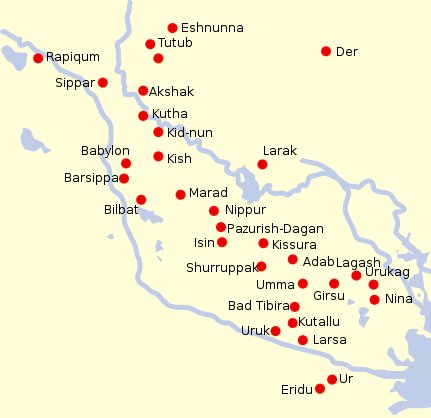
|
.jpg)
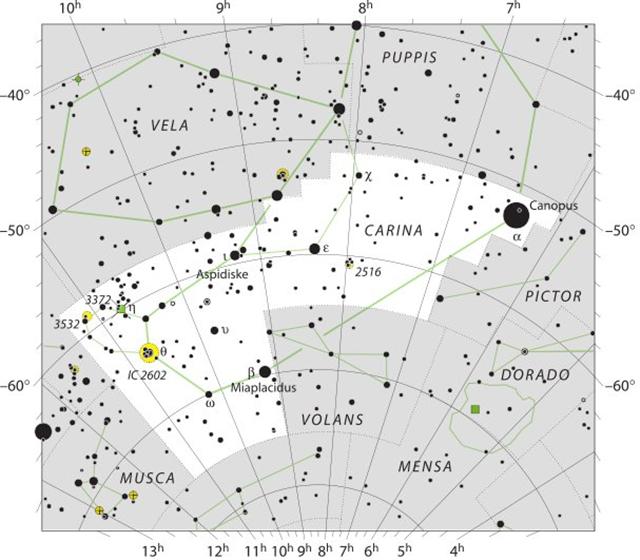
|
|
... The Pythagoreans make Phaeton fall into Eridanus, burning part of its water, and glowing still at the time when the Argonauts passed by. Ovid stated that since the fall the Nile hides its sources. Rigveda 9.73.3 says that the Great Varuna has hidden the ocean. The Mahabharata tells in its own style why the 'heavenly Ganga' had to be brought down. At the end of the Golden Age (Krita Yuga) a class of Asura who had fought against the 'gods' hid themselves in the ocean where the gods could not reach them, and planned to overthrow the government. So the gods implored Agastya (Canopus, alpha Carinae = Eridu) for help. The great Rishi did as he was bidden, drank up the water of the ocean, and thus laid bare the enemies, who were then slain by the gods. But now, there was no ocean anymore! Implored by the gods to fill the sea again, the Holy One replied: 'That water in sooth hath been digested by me. Some other expedient, therefore, must be thought of by you, if ye desire to make endeavour to fill the ocean ...
... Canopy ... covering over a throne, etc. XIV (Wycl.). Late ME. canope, canape - medL. canopeum baldacchino, for L. cōnōpēum, -eum, -ium net over a bed, pavilion - Gr. kōnōpeîon Egyptian bed with mosquito curtains, f. kōnōps gnat, mosquito ...

|
Was
king
Charles
II
hiding
in a
way
similar
to
η
Carinae?
... Robur Carolinum,
Charles' Oak, the Quercia
of Italy and the Karlseiche
of Germany, was formally published
by Halley in 1679 in commemoration
of the Royal Oak of his patron,
Charles II, in which the king had
lain hidden for twenty-four hours
after his defeat by Cromwell in the
battle of Worcester, on the 3rd of
September
1651
...
| Egyptian courtyard |
 |
Phoenician heth |
 |
Greek eta |
Η (η) |
|
... The letter shape ultimately goes back to a hieroglyph for 'courtyard' ... possibly named hasir in the Middle Bronze Age alphabets, while the name goes rather back to hayt, the name reconstructed for a letter derived from a hieroglyph for 'thread'

... The kaikai are the rythmic songs that are sung to cat's cradles, the string games that are found not only throughout the Pacific but throughout the world. On premissionary Rapa Nui the kaikai, together with their corresponding cat's cradles, were not simple children's games but were used, among other things, to produce magic effect. They were highly important for the study of Rapa Nui's rongorongo. This is because it was apparently with the aid of cat's cradles that the rongorongo experts taught their pupils to learn many of the chants accompanying the incised inscriptions ...
... string games could be resumed after it was clear that the Sun had managed to leave the horizon and was rapidly gaining in altitude: 'Before the sun starts to leave the horizon ... when it shows only on the horizon, ... then string games were no longer allowed as they might lacerate the sun. Once the sun had started to go higher and could be seen in its entirety, string games could be resumed, if one so wished. So the restriction on playing string games was only applicable during the period between the sun's return and its rising fully above the horizon ...

|
| ST JOHN'S DAY |
JUNE 25 |
26 (177 = 161 + 16) |
27 |
 |
 |
 |
 |
| Ga4-12 (95) |
Ga4-13 → 14 * 29˝ |
Ga4-14 |
Ga4-15 |
| p Carinae (159.3) |
φ Hydrae (160.3) |
no star listed (161 = 249 - 88) |
VATHORZ POSTERIOR = θ Carinae (162.1), PEREGRINI = μ Velorum, η Carinae (162.6) |
 |
| Aug 27 |
28 (240) |
29 (*161) |
30 |
| °Aug 23 |
24 (236) |
25 (*157) |
26 |
| 'July 31 |
'Aug 1 |
2 (214) |
3 (20 * 29 = 365 + 215) |
| "July 17 |
18 |
19 (200) |
20 (*121) |
| DAY 159 |
160 |
161 |
162 |
|
... The month, which takes its name from Juppiter the oak-god, begins on June 10th [161] and ends of July 7th [188]. Midway comes St. John's Day, June 24th, the day on which the oak-king was sacrificially burned alive. The Celtic year was divided into two halves with the second half beginning in July, apparently after a seven-day wake, or funeral feast, in the oak-king's honour ... |
| CLOSE TO THE FULL MOON: |
| CHRISTMAS EVE |
DEC 25 |
26 (360) |
27 |
|
η Aquarii (342.1), σ Gruis (342.4), SITULA (Water-jar) = κ Aquarii (342.7)
*301.0 = *342.4 - *41.4 |
ε Piscis Austrini (343.5), ο Pegasi, β Gruis (343.8) |
ρ Gruis (344.0), MATAR (Rain) = η Pegasi (344.2), η Gruis (344.6), β Oct. (344.7) |
λ Pegasi (345.0), ξ Pegasi (345.1), ε Gruis (345.3), τ Aquarii (345.7), ξ Oct. (345.8), μ Pegasi (345.9) |
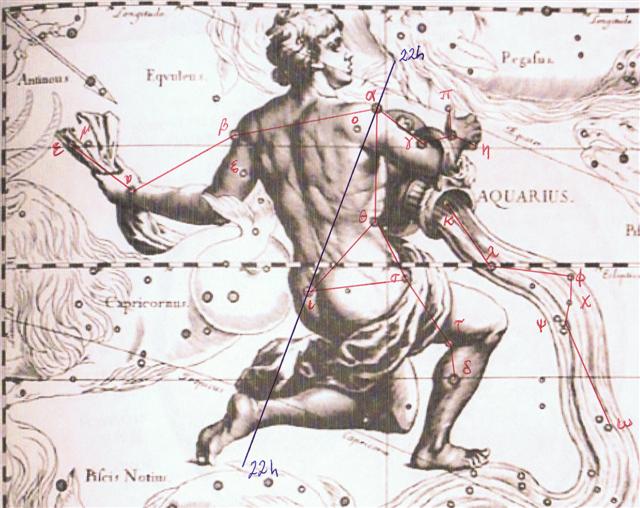 |
| Febr 26 |
27 (58 = 2 * 29) |
28 (365 + 59 = 424) |
March 1 (*345) |
| °Febr 22 |
23 |
24 (55) |
25 |
| 'Jan 30 (*315) |
31 |
'Febr 1 (32) |
2 |
| "Jan 16 (*301) |
17 |
18 (383) |
19 |
| DAY 342 |
343 |
344 |
345 |
| JUNE 28 |
29 (180) |
SIRIUS |
JULY 1 |
 |
 |
 |
 |
| Ga4-16 |
Ga4-17 |
Ga4-18 (101) |
Ga4-19 |
| ν Hydrae (163.1) |
no star listed (164)
ALTAIR (α Aquilae)
|
Wings-27 (Snake)
η Octans (165.4), ALKES (Shallow Basin) = α Crateris (165.6)
*124.0 = *165.4 - *41.4 |
ANA-TIPU-4 (Upper-side-pillar - where the guards stood)
MERAK (Loin) = β Ursae Majoris (166.2), DUBHE (Bear) = α Ursae Majoris (166.7) |
| Aug 31 |
Sept 1 |
2 (*165) |
3 (246) |
| °Aug 27 |
28 |
29 (*161) |
30 (242) |
| 'Aug 4 (216) |
5 (*137) |
6 |
7 |
| "July 21 |
22 / 7 |
23 |
24 (*125) |
| DAY 163 |
164 |
165 |
166 |
| CLOSE TO THE FULL MOON: |
| DEC 28 |
29 |
30 (364 = 12 * 29 + 16) |
31 (*285) |
| ι Cephei (346.0), λ Aquarii, γ Piscis Austrini, σ Pegasi (346.5) |
SCHEAT AQUARII = δ Aquarii (347.0), ρ Pegasi (347.2), δ Piscis Austrini (347.4), FOMALHAUT (Mouth of the Fish) = α Piscis Austrini, τ Gruis (347.8)
*306.0 = *347.4 - *41.4 |
FUM AL SAMAKAH (Mouth of the Fish) = β Piscium (348.3), ζ Gruis (348.5), ο Andromedae (348.9) |
Al Fargh al Mukdim-24 (Fore Spout) / Purva Bhādrapadā-26 (First of the Blessed Feet) / House-13 (Pig)
SCHEAT PEGASI = β Pegasi, π Piscis Austrini (349.3), κ Gruis (349.4), MARKAB PEGASI = α Pegasi (349.5)
*308.0 = *349.4 - *41.4 |
| March 2 |
3 |
4 (*348) |
5 (64) |
| °Febr 26 |
27 |
28 (*344) |
°March 1 (60) |
| 'Febr 3 |
4 |
5 (36) |
6 (*322) |
| "Jan 20 |
21 |
22 |
23 (*308) |
| DAY 346 |
347 |
348 (= 364 - 16) |
349 |
| JULY 2 |
3 (184) |
4 (*105) |
 |
 |
 |
| Ga4-20 |
Ga4-21 (104 = 2 * 52) |
Ga4-22 |
|
11h (167.4)
χ Leonis, χš Hydrae (167.1), χ˛ Hydrae (167.3) |
AL SHARAS (The Ribs) = β Crateris (168.6) |
Al Zubrah-9 (The Mane) / Purva Phalguni-11 (First Reddish One)
ZOSMA (Girdle) = δ Leonis (169.2), COXA (Hips) = θ Leonis (169.4)
*128.0 = *169.4 - *41.4 |
| Sept 4 |
5 (248 = 2 * 124) |
6 |
| °Aug 31 |
°Sept 1 (244 = 2 * 122) |
2 |
| 'Aug 8 (*140) |
9 |
10 (222) |
| "July 25 (*126) |
26 |
27 (208) |
| DAY 167 |
168 (= 2 * 84) |
169 |
| CLOSE TO THE FULL MOON: |
| JAN 1 |
2 (184 + 183) |
3 (368) |
|
23h (350.0)
υ, θ Gruis (350.0), π Cephei (350.6), ι Gruis (350.9) |
SIMMAH = γ Piscium (351.7) |
φ Aquarii (352.0), ψ Aquarii (352.4), χ Aquarii (352.6), γ Tucanae, φ Gruis (352.8)
*311.0 = *352.4 - *41.4 |
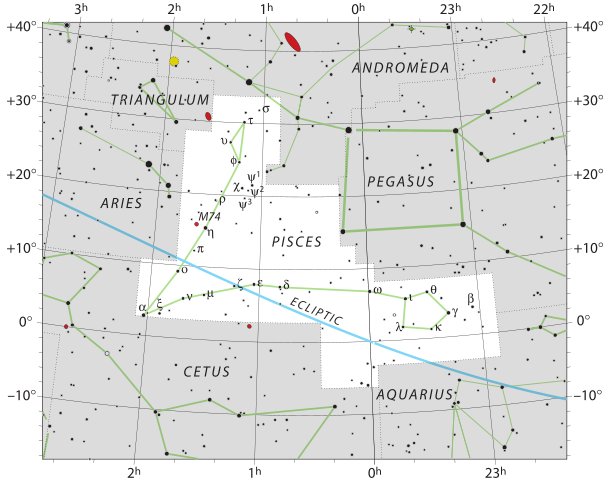 |
| March 6 (*350) |
7 (66) |
8 (432 = 2 * 216) |
| °March 2 |
3 |
4 (63 = *348) |
| 'Febr 7 |
8 |
9 (40 = *325) |
| "Jan 24 |
25 (*310 = 390) |
26 |
| DAY 350 |
351 (= 288 + 63) |
352 |
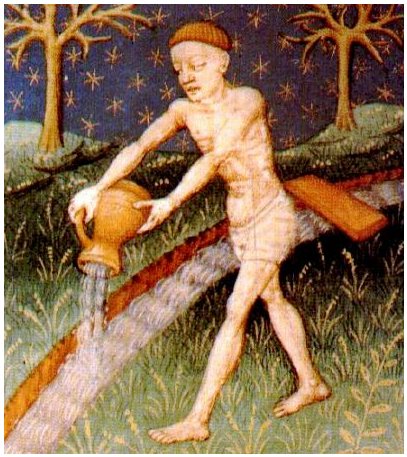
|
.jpg)



















.jpg)















